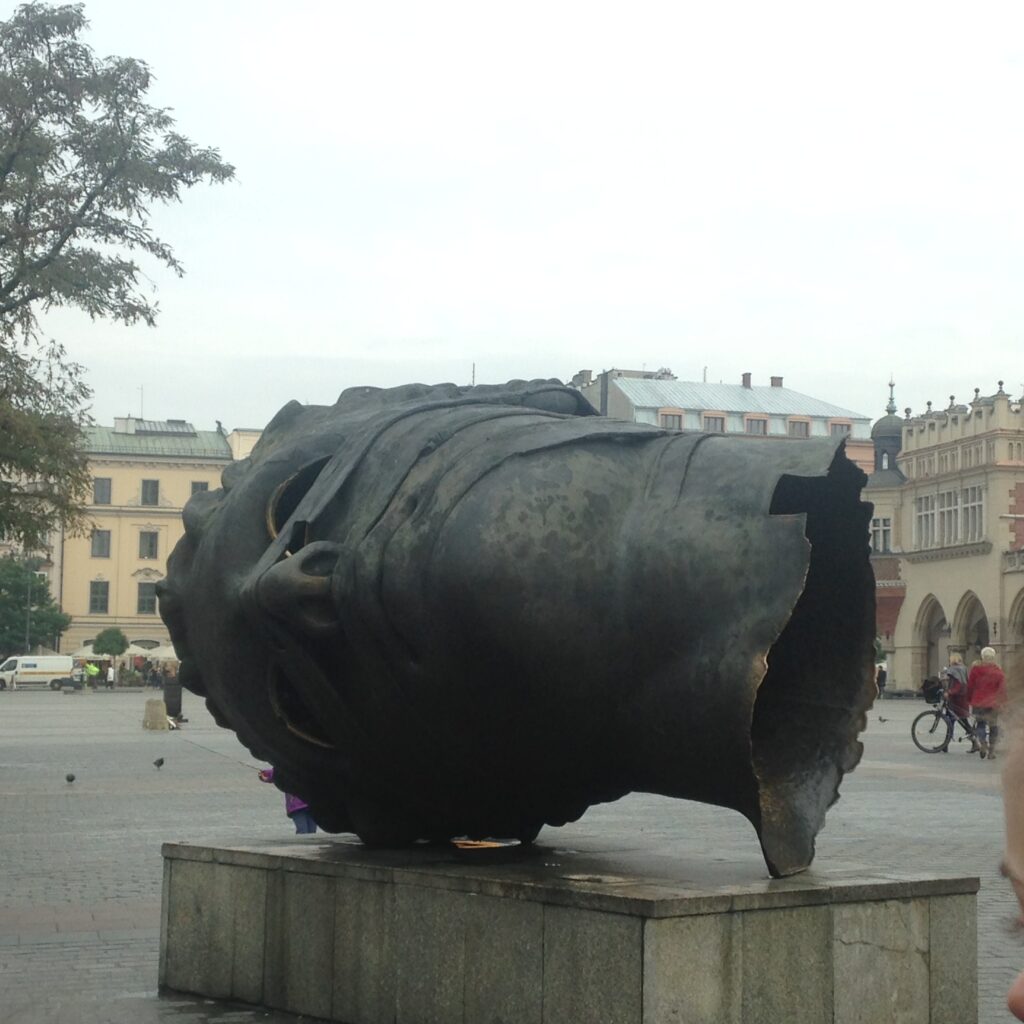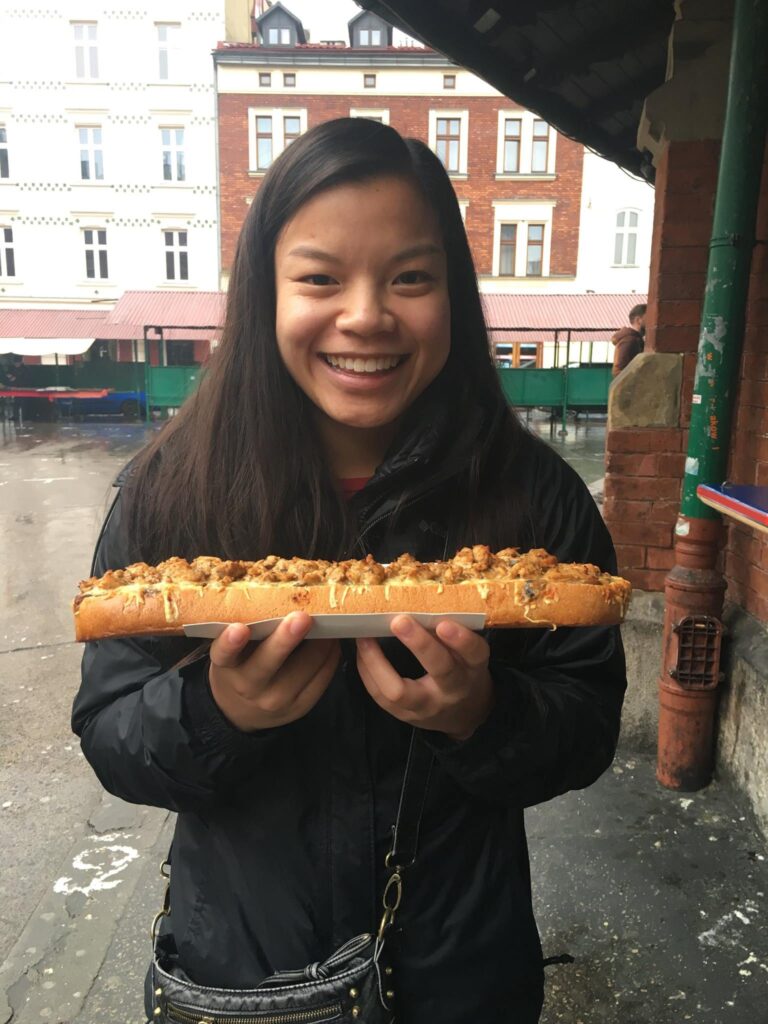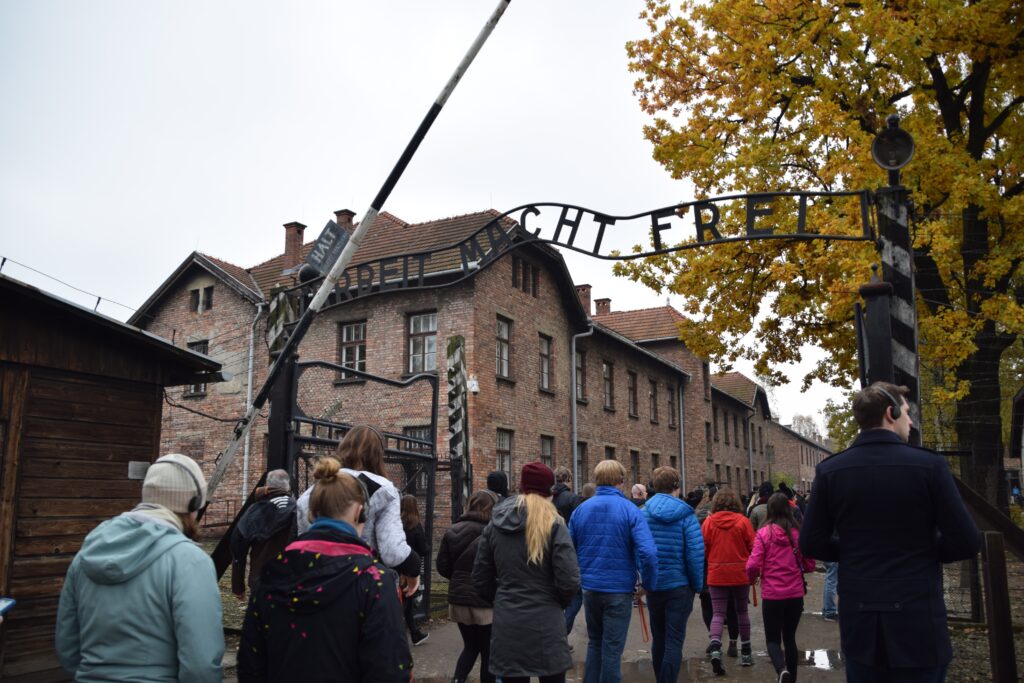Day 1: Arrival
Recently, we headed out on yet another sleeper train. This time our destination was Krakow, Poland. Our first day was very relaxed, with a brief morning tour around the city and the rest of the afternoon free. A few highlights from the tour included hearing the trumpeter at St. Mary’s church (who plays every hour on the hour), seeing Igor Mitoraj’s Eros Bendato, or “The Head” as it is commonly known, and walking around the castle grounds.
Day 2: Tours
Our second day in Krakow also began with tour, this time around the Kazimierz, the historical Jewish district. We were able to see many synagogues with historical significance in the city, including the Remuh Synagogue and the Izaak Synagogue. It was a cool chance to learn a lot about Jewish history in the region, and it was nice because we don’t often visit synagogues on our tours (generally we see examples of gothic or baroque architecture in Catholic churches).
After our tour around Kazimierz, we had a brief lunch in the area. Many people ate zapiekankas, which are these delicious open-faced Polish sandwiches. A large one cost less than $3!
Once we ate lunch, we visited the Museum of Polish Resistance, which is in Oskar Schindler’s former enamel factory. We spent a couple of hours there, but that wasn’t even long enough to fully appreciate the amazing exhibits that were there. After that museum, we finished up the day with our Cross-Cultural Psychopathology class.
Day 3: Free day
The weather was iffy while we were Poland, which meant that some of our tentative activities, like going on a bike ride around the area, weren’t able to happen. But that was okay! Because the free time allowed us to explore on our own on Friday. Many people went souvenir shopping, visited the main square more, or did school work. That evening, though, we all went to the Wisla versus Bruk-Bet Termalica Nieciecza futbol game. Wisla won 2-0, thanks to our new favorite player Zdenek Ondrásek.
Katie captured an amazing PK by Ondrásek!!! Clearly, I was very excited!
Day 4: KL Auschwitz & Birkenau
Saturday was a tougher day but also an incredibly important day because we visited KL Auschwitz-Birkenau in Oswiecim, Poland. In the morning and early afternoon, we toured KL-Auschwitz, or Auschwitz-1, which was the main camp. It is a museum now, but the buildings are the originals (most of the exhibitions we saw were held in former barracks for the women). One of the hardest parts was seeing all the hair of the victims–nearly 2 tons of it. We also saw holding cells, where many prisoners would be kept for two weeks; a wall against which prisoners were shot; and one of the gas chambers and crematory. It was all very surreal.

Cari looking through the names of 4 million people who died at concentration camps during the Holocaust. The names of 2 million people are still unknown.

Evan, Jeremy, Teddy, and Edylweiss looking through the names of 4 million people who died at concentration camps during the Holocaust. The names of 2 million people are still unknown.
The latter part of the afternoon was spent at Auschwitz-Birkenau. This is the camp with the infamous railway station, although it was only added in the last year of the camp’s existence. When we were there, we saw the bathroom barracks, the men’s barracks, and the women’s barracks. We also saw the ruins of the gas chambers and crematory and the registration room, which the Nazis had tried to destroy. Additionally, we saw several chimneys that stood where former barracks had deteriorated over time because preserving all of them had not been important during the Communist era. One of the most haunting, things, though, was seeing the ditches where the human ash was dumped. People had the chance to walk the grounds either in groups or on their one, which was nice because it allowed us to reflect however we chose.
Several of us commented on how it was such a beautiful fall day weather-wise, which felt ironic. Still, the experience was powerful.
Day 4: Wieliczka & Nowa Huta
For our last day in Poland, we went to the city of Wieliczka where we toured the salt mine. It is one of the oldest salt mines in the world, and there are many amazing salt carvings throughout it. In fact, there is even a chapel where mass and weddings are still held!

Group shot down in the salt mine. Because salt was so valuable, kings would have salt busts as a sign of importance! Credit to Jennifer
After the salt mine tour, we went to Nowa Huta, which was created during the time of communism. It was fascinating to see the grey neighborhoods that were created for efficiency. We also saw a Arka Pana, a Catholic church that looks like Noah’s Ark and sparked a lot of controversy when it was built in the 1970s.
We had yet again another great weekend trip! One more to go–Karlovy Vary next weekend 🙂



















Recent Comments